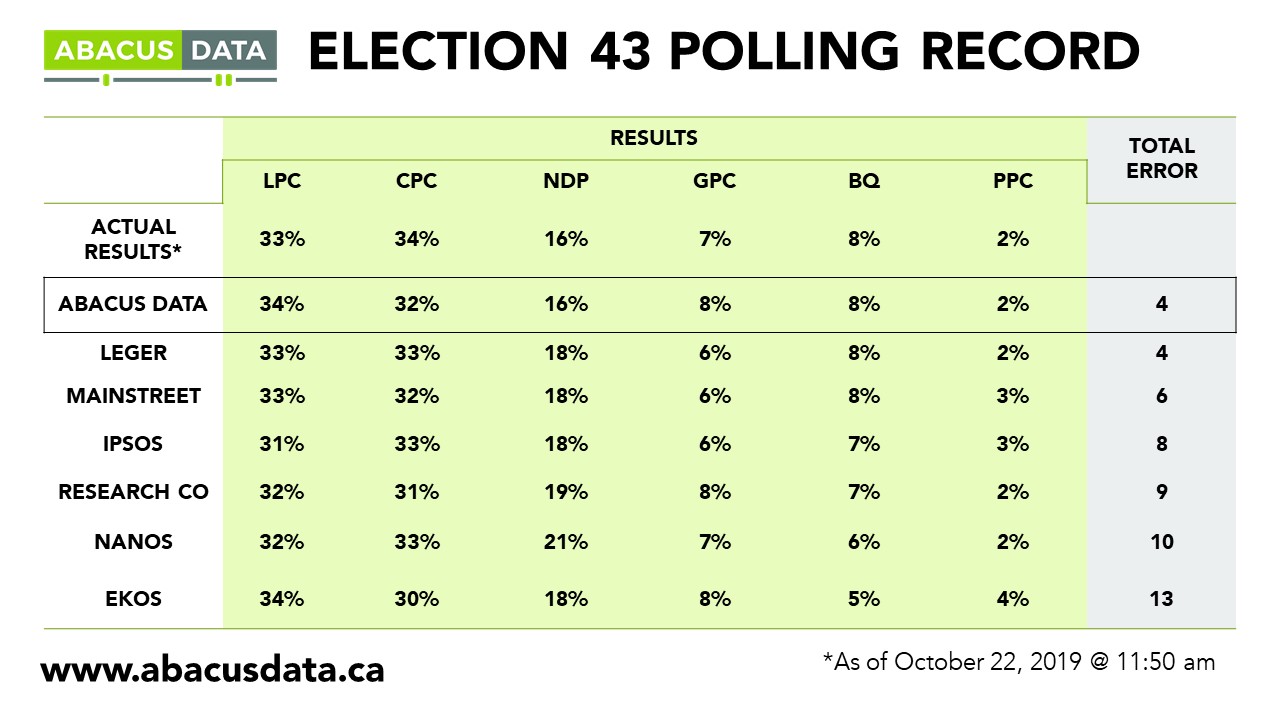A Premier Ford Reset? Public yet to clue in as negatives hold steady
December 23, 2019
The media has picked up on efforts to present a kinder, refreshed, genteel Doug Ford, but the public has yet to notice.
Impressions of the Ontario Premier have been relatively stable since April 2019 when his negatives first reached the ~60% disapproval threshold and ~20% positive, a dynamic that has not shifted for some time.
Today, 44% of Ontarians report having a very negative impression of the premier, while another 18% describe their view as mostly negative. Nearly everyone has an opinion on Ford– only 4% suggest they don’t know enough to have a view.


Though a fresh face and renewed approach by the Premier would take some time to take root, there has been relatively little traction so far from a public opinion standpoint.
Men particularly drive support for the premier while women tend to have a much dimmer view of the premier. His support is more robust in suburban areas of the province, though there is no edge for the premier in the 905 or significant differences between Toronto voters and the wider GTA.
Income is by far the biggest correlate of views of the premier, with those in households under $50K or less having a significantly more negative view of the premier than those in higher income brackets.

One in four previous Ford voters now has a negative view of the premier, not compensated by previous OLP and ONDP voters who continue to dislike the premier.

In fact, when we specifically ask Ontarians whether their impression of Doug Ford has been getting better, worse, or not changed much in the past few months, only 14% suggest it has gotten better while 47% have stated his reputation has gotten even worse.

This momentum is mostly among those who already feel negatively about the premier, 67% of whom say their impression is getting worse still. Fans of the Premier report feeling more positively about him, while those who are neutral feel mostly the same. In other words, the only impact of the last few months has been further polarization of the electorate.
While just under half of Ontarians believe the Ford government is much worse than the preceding Wynne administration, there continues to be little buyer’s remorse on the part of 2018 Ontario PC voters. Those who voted PC in 2018 believe Premier Ford is offering a better government than his predecessor, with one in three even suggesting a “much better” government.

There even appears to be some small conversion on the part of past progressive voters. One in ten of past Liberal and New Democrat voters believe that Ford is delivering a better government than his predecessor. This gain should be balanced against the 11% of PC voters who feel they got a worse government when they voted Ford in.

In total today, 26% would definitely or probably vote PC in the next election while an additional 15% would consider it, suggesting a similar coalition of votes still exists for the premier (39%) as came through on election day (40% PC vote share in 2018).


THE UPSHOT
While the media has reported on a more contrite, polished and collaborative Ford following Prime Minister Trudeau’s reelection, voters have yet to notice, though this does not mean they never will. Baggage from his first year in government coupled with current high-profile turmoil around the teacher’s strike and Hamilton LRT cancellation is no doubt unhelpful.
Things have not gotten worse for the premier – those who already dislike him are becoming more disillusioned, but his winning coalition of 40% of Ontarians open to voting PC is still intact, despite the turmoil. An austerity agenda will be a hard sell in the friendliest of political environments, even absent backtracking on infrastructure investments and full out war with the province’s teachers. If there’s a time for Premier Ford to make unpopular decisions and begin a journey to a brand refresh for his government, this is it.
METHODOLOGY
Our survey was conducted online with 570 Ontarians aged 18 and over from December 12 to 16, 2019. A random sample of panellists was invited to complete the survey from a set of partner panels based on the Lucid exchange platform. These partners are double opt-in survey panels, blended to manage out potential skews in the data from a single source.
The margin of error for a comparable probability-based random sample of the same size is +/- 4.1%, 19 times out of 20. The data were weighted according to census data to ensure that the sample matched Canada’s population according to age, gender, educational attainment, and region. Totals may not add up to 100 due to rounding.
ABOUT ABACUS DATA
We are the only research and strategy firm that helps organizations respond to the disruptive risks and opportunities in a world where demographics and technology are changing more quickly than ever.
We are an innovative, fast-growing public opinion and marketing research consultancy. We use the latest technology, sound science, and deep experience to generate top-flight research-based advice to our clients. We offer global research capacity with a strong focus on customer service, attention to detail and exceptional value.
We were one of the most accurate pollsters conducting research during the 2019 Canadian Election.

Contact us with any questions.
Find out more about how we can help your organization by downloading our corporate profile and service offering.



